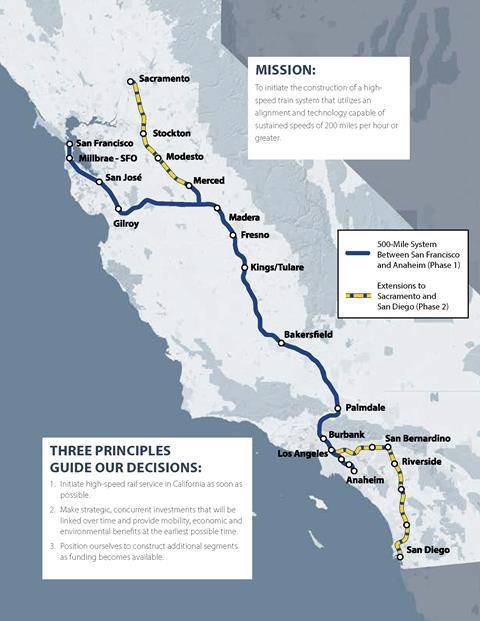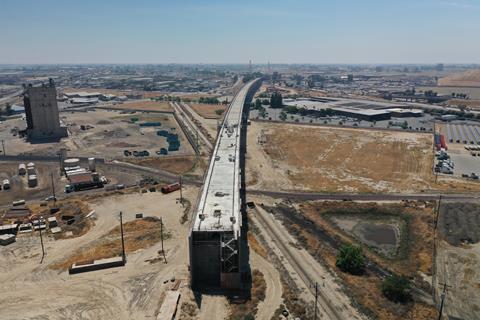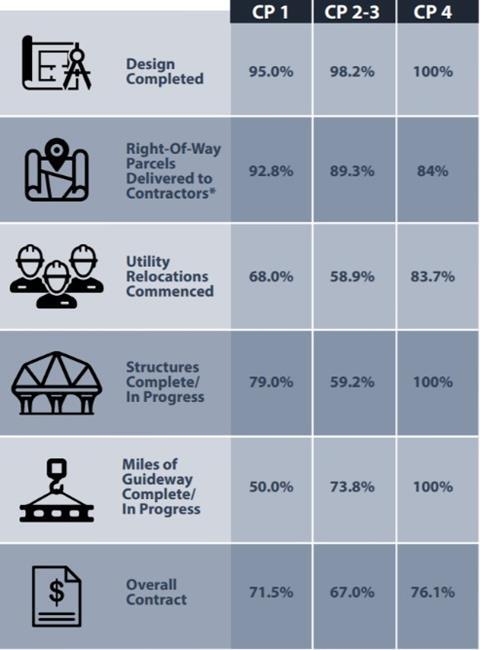
USA: In a marked reversal of policy since late 2020, the California High Speed Rail Authority’s 2022 Draft Business Plan says it will now complete the initial section of the planned San Francisco – Los Angeles high speed line through the Central Valley as a double-track electrified railway.
Presenting an upbeat assessment of the outlook for the high speed programme on February 8, the authority reports renewed confidence about completing the 800 km ‘Bay to Basin’ Phase 1 vision set out in 2009. CHSRA says that the change in federal government in January 2021 has raised prospects of further funding for rail projects being unlocked in the short term, notably through the Bipartisan Infrastructure Bill and the Build Back Better legislation now passing through Congress. Together, these could provide billions of dollars in federal funding for transport projects, including high speed rail.


CHSRA says that the availability of these funding streams, and the return last June of nearly $1bn of federal money that had been clawed back by the previous Trump administration, are enabling work to proceed at a faster pace and with greater confidence.
The state of California has proposed a $15bn budget for transport investment in 2022-23, but CHSRA has deferred finalising an updated budget until the state legislature approves its $4·2bn request for funds under Proposition 1A, the law that was approved by Californian voters in November 2008 state elections to allocate funds for the high speed programme. However, in December last year, the CHSRA board added $2·3bn to the $15·6bn ‘baseline budget’ approved in the 2020 Business Plan to reflect the financial impact of Covid-19 and escalating costs of local mitigation measures.
Land acquisition progress
The draft 2022 business plan states that design of the 191 km Initial Operating Section between Merced, Fresno and Bakersfield should be complete by the end of June. CHSRA reports that it has now bought over 90% of the plots of land needed to build the Central Valley section. ‘For the first time in several years, we can say that right-of-way acquisition is on a steady and reliable path’, it notes. This has in turn enabled the number of people working daily on construction to rise from 300 in 2018 to 1 000 today.

The authority expects to issue tenders by the end of February for a series of contracts covering detailed design and preparatory work on the route around Merced and Bakersfield, and four stations at Merced, Fresno, Kings/Tulare and Bakersfield.

The authority has appointed DB Engineering & Consulting USA as its Early Train Operator, and work is underway to revise how potential passenger numbers are forecast, reflecting recent market surveys showing that more riders would transfer to Central Valley high speed trains from connecting conventional rail services provided by Amtrak, Caltrain, Altamont Corridor Express and others. The rail journey time between Merced and Bakersfield is expected to fall to around 90 min once IOS is operational, approximately half the typical journey time by road. To facilitate this connectivity, CHSRA says it is investigating how it can support the electrification of more connecting routes across the state.
The 2022 business plan is now subject to a period of public consultation before it is submitted to the state legislature by May 1.
Supporting documents
Click link to download and view these files2022_Draft_Business_Plan
PDF, Size 10.55 mb

















